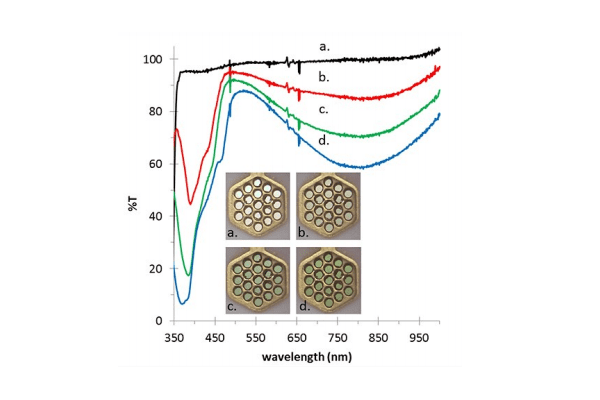Derek Peloquin

Derek Peloquin

Hexacoordinate Silicon Complexes as Cathodic Colorants
Abstract:
Electrochemical and spectroelectrochemical characterization of hexacoordinate polypyridine silicon complexes show that they are fitting candidates for electrochromic applications. Tris(bipyridine)silicon(IV), [Si(bpy)3]+4, is colorless in acetonitrile as the hexafluorophosphate salt, with two unresolved peaks at 327 and 341 nm. Successive reduction by up to three electrons turns the solution green, as the intensity of the 327/341 nm peak decreases and two new peaks, one around 390 nm and a very broad transition centered around 800 nm, emerge. Each reduction is fully reversible and entirely based on the bipyridine ligands, and full conversion to each charged state is realized at the proper potential. Bis(4’-tolylterpyridine)silicon(IV), [Si(ttpy)2]+4, is slightly yellow in acetonitrile as the hexafluorophosphate salt, with a sharp peak at 302 nm and two unresolved peaks at 380 and 408 nm. Reduction by two electrons turns the solution blue with emergence of a broad peak centered around 638 nm, and reduction by a further two electrons turn the solution purple with a peak at 521 nm that tails out into the infrared. Complexes with other ligands, such as terpyridine, 4,4’-dimethylbipyridine, and 4,4’-di-tert-butylbipyridine, have also been synthesized and characterized by cyclic voltammetry and spectroelectrochemistry.
Sponsoring Chair: Dr. Thomas A. Schmedake
Committee: Dr. Bernadette Donovan-Merkert, Dr. Daniel Rabinovich, Dr. Michael Walter, Dr. Brigid Mullany